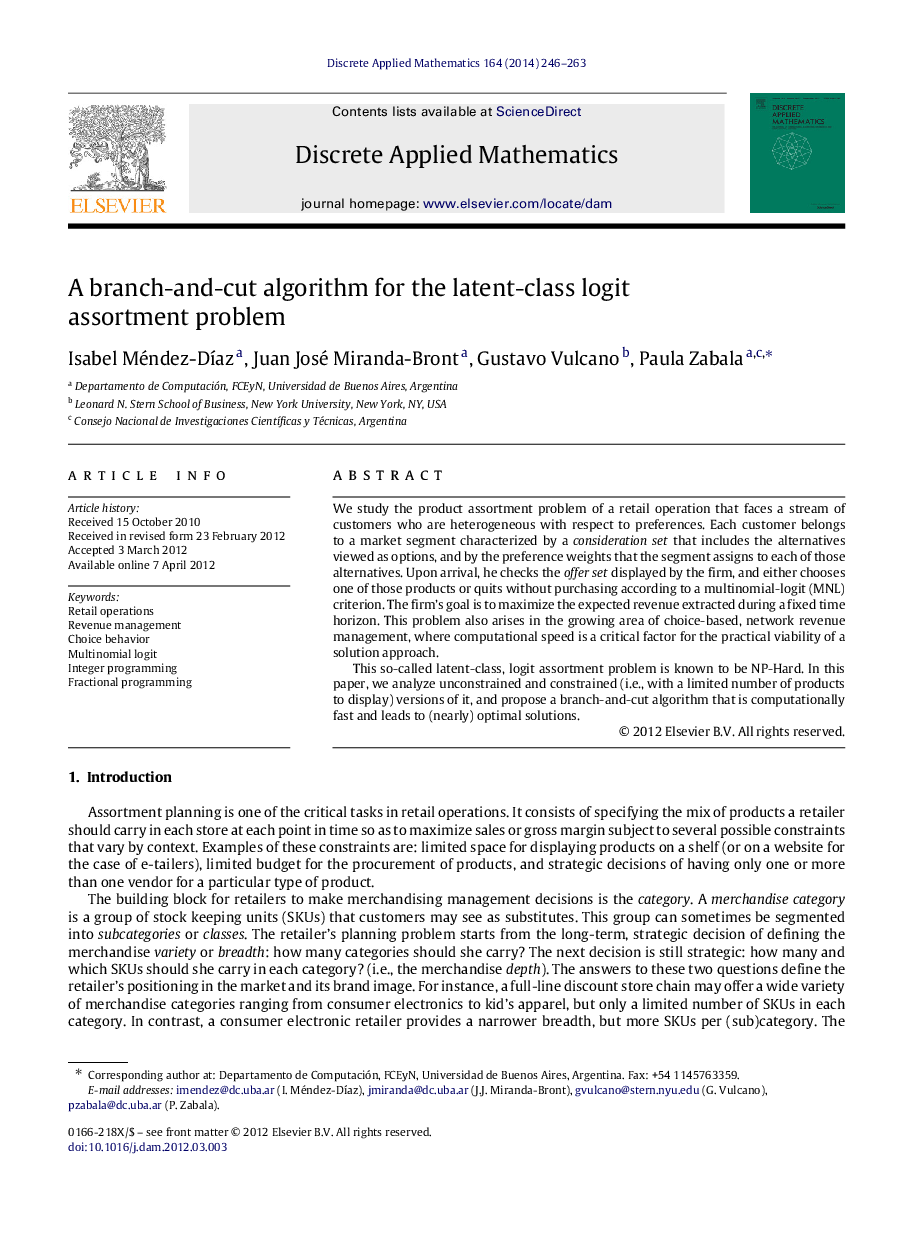| Article ID | Journal | Published Year | Pages | File Type |
|---|---|---|---|---|
| 419101 | Discrete Applied Mathematics | 2014 | 18 Pages |
We study the product assortment problem of a retail operation that faces a stream of customers who are heterogeneous with respect to preferences. Each customer belongs to a market segment characterized by a consideration set that includes the alternatives viewed as options, and by the preference weights that the segment assigns to each of those alternatives. Upon arrival, he checks the offer set displayed by the firm, and either chooses one of those products or quits without purchasing according to a multinomial-logit (MNL) criterion. The firm’s goal is to maximize the expected revenue extracted during a fixed time horizon. This problem also arises in the growing area of choice-based, network revenue management, where computational speed is a critical factor for the practical viability of a solution approach.This so-called latent-class, logit assortment problem is known to be NP-Hard. In this paper, we analyze unconstrained and constrained (i.e., with a limited number of products to display) versions of it, and propose a branch-and-cut algorithm that is computationally fast and leads to (nearly) optimal solutions.
